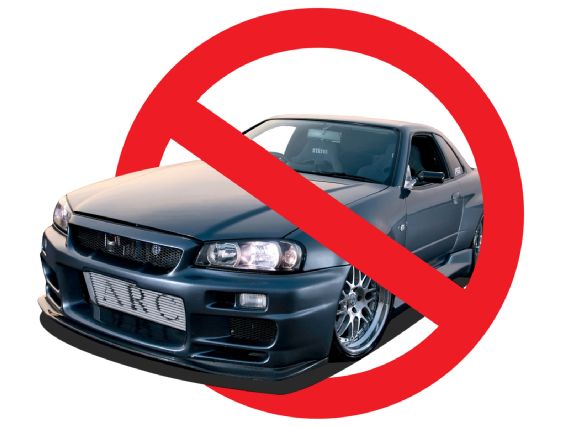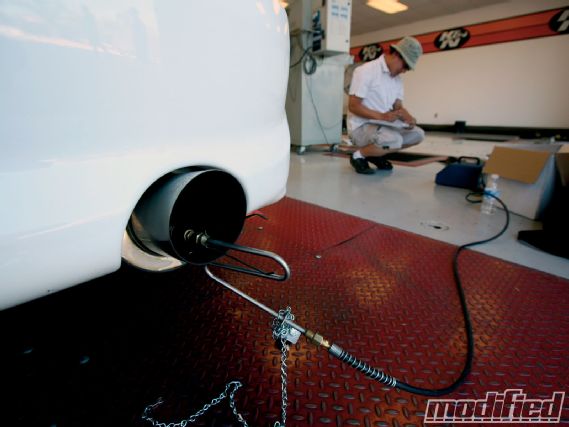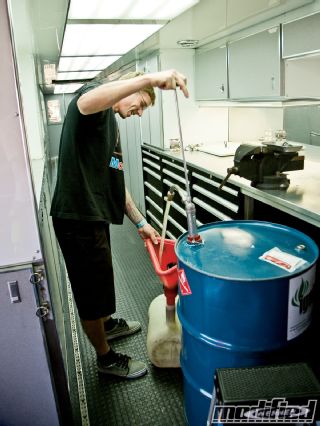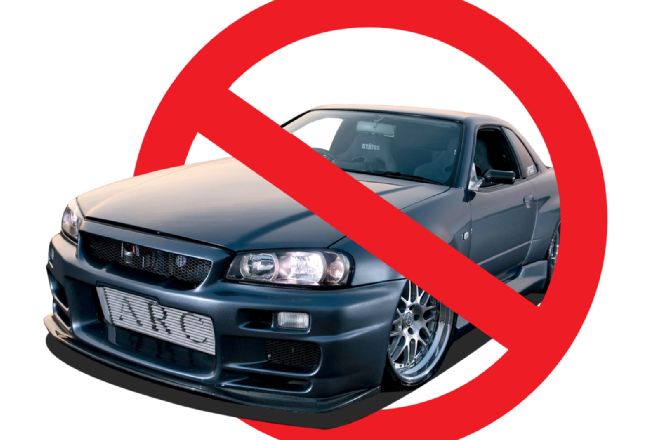Modifying cars for improved performance and style has always been a hobby with a bit of a rebellious streak. In the "good old days," it was pretty common for people to gut their car's catalytic converter and run leaded race gas on the street. Like it or not, affecting under-the-hood modifications to extract a little extra horsepower continues to be a part of this go-fast-obsessed subculture of ours. Hopefully, you're not so "fast and furious" that you're doing anything dangerous or illegal, but chances are you've at least considered a modification or two that falls into a gray area.
 |
Tailpipe Emissions Laws - Lobby For The Hobby
|
Tailpipe Emissions Laws - Lobby For The Hobby
The thing is, in these highly politicized and eco-concerned times, it's more important than ever for the tuning community to set a good example by playing within the law, especially as it relates to tailpipe emissions. Relatively harmless mods like a loud exhaust or slammed ride height might draw some unwanted attention from Johnny Law, but when you dump unburned fuel and associated contaminants into the atmosphere, it's bad for us all; it's the kind of thing that'll lead to legislators and lawmakers cracking down even more on the types of modifications we're legally allowed to make.
The problem is, as many of you already know, complying with the confusing and often vague laws in your home state isn't as straightforward as it could (and should) be. So for some much-needed clarity and wisdom on the subject, we've turned to SEMA (Specialty Equipment Market Association), an organization with almost 50 years of experience supporting the aftermarket and lobbying on behalf of our rights as tuners, customizers, hot rodders and car enthusiasts.
Many states operate their own emission inspection and maintenance (I/M) programs in areas that the EPA (Environmental Protection Agency) has designated as a "nonattainment area," meaning that the area has not attained the EPA's required air quality. According to our source at SEMA, "The EPA checks for carbon monoxide, lead, nitrogen dioxide, ozone, particulate matter and sulfur dioxide when designating these areas, and when an area does not meet the standard for any individual pollutant, or any combination of the pollutants, then it is placed on the list of nonattainment areas. To meet the EPA's emissions reduction requirements, many states are implementing more stringent I/M programs. An I/M program may be currently operating in your state, or could be soon." Chances are if you live in a big city, the air quality doesn't meet EPA standards and you've been required to spend a little quality time at the local smog check facility.
 |
Tailpipe Emissions Laws - Lobby For The Hobby
|
Tailpipe Emissions Laws - Lobby For The Hobby
Your state or region may be using what's called the I/M 240, which is an enhanced emissions testing program where the "240" represents the number of seconds that the tailpipe portion of the test lasts. I/M 240 tests require visual inspection of emissions control devices, an evaporative emissions test and a transient drive-cycle exhaust emissions test, performed while the vehicle is running on rollers. This program is notorious for mistakenly failing vehicles in the visual test based on the presence of legal aftermarket engine products or forcing older collector vehicles to undergo some type of testing when none should be required.
Other states have incorporated the OBD testing method as part of the vehicle emissions inspection for '96-and-newer vehicles. These OBD tests replace tailpipe tests by identifying emissions problems through information stored in the vehicle's onboard computer system. Some states have even proposed only testing vehicles with the OBD test, limiting the vehicles that need to be tested to those manufactured in 1996 and later. To our way of thinking, this more streamlined approach makes a lot of sense. After all, if the OBD system shows all is well with regards to tailpipe emissions, it shouldn't matter what type of aftermarket parts you've got bolted up to the engine.
SEMA's position on this issue is that "Policy makers must properly focus inspection procedures and not confuse legitimate aftermarket parts with emission defeat devices and tampering violations. The hobby must also pursue proactive legislative initiatives to establish exemptions from inspections for low-mileage vehicles, classic vehicles (defined as 25 years old and older) and newer vehicles. It is useful to remind legislators that the emissions from this small portion of the vehicle fleet are negligible. This is especially true when you consider the low miles typically driven by hobby vehicles and the excellent condition in which these vehicles are maintained."
 |
Tailpipe Emissions Laws - Lobby For The Hobby
|
Tailpipe Emissions Laws - Lobby For The Hobby
If SEMA's position makes as much sense to you as it does to us, the question then becomes how to lobby local, state and federal representatives on these issues. SEMA has the answer here, too, thanks to the SEMA Action Network (SAN), designed to encourage enthusiasts to get involved and join the network so that we can lobby together for positive action that ensures the future of our automotive tuning habit. SAN isn't just made of individuals either - the network also includes many car clubs and performance parts manufacturers across the United States and Canada. The SAN is free to join and carries no obligations or commitments.
Established in 1997, SAN has grown to nearly 40,000 members and has the ability to reach 30 million enthusiasts through print and press, allowing it to very effectively promote hobby-friendly legislation and oppose unfair laws. SAN membership doesn't have to be a passive experience, either. Thanks to its comprehensive set of tools and resources - including a website that features tracked action alerts, guidance on letter writing, lobbying elected officials and a means by which you can identify your legislators - SAN provides its members with all tools necessary to effectively lobby on an individual basis. They even provide an extensive list of state legislators and U.S. congressional representatives and senators who are car enthusiasts and sympathetic to SAN and its membership.
If you think lobbying of this type isn't effective, think again. During its 13-year history, SAN has played an integral role in shaping government policy. SAN-guided legislation include the enactment of street rod and custom vehicle (including kit cars and replicas) registration and titling laws in 21 states, safeguarding of legal off-road nitrous oxide use, scrapping state level "Cash for Clunkers" legislation, enacting legislation to lower taxes and fees for hobbyist vehicles, and advocating to ensure public lands remain open to responsible off-road recreation.
But don't think that these successes mean we can sit back and relax. The current economic and eco-concerned atmosphere has encouraged governments to become more aggressive with their anti-auto hobby legislation. States are seeking new avenues for generating revenue and new ways of dictating what you can and cannot do with your vehicles. As a result, we need the SEMA Action Network now more than ever and we each need to be willing to pitch in to protect our right to customize, improve and otherwise "tune" our cars. Enlist now in this fellowship and encourage any car clubs you're a part of to do the same by visiting semasan.com. There's strength in numbers, and the fight for our right to modify our cars is only going to get tougher.

